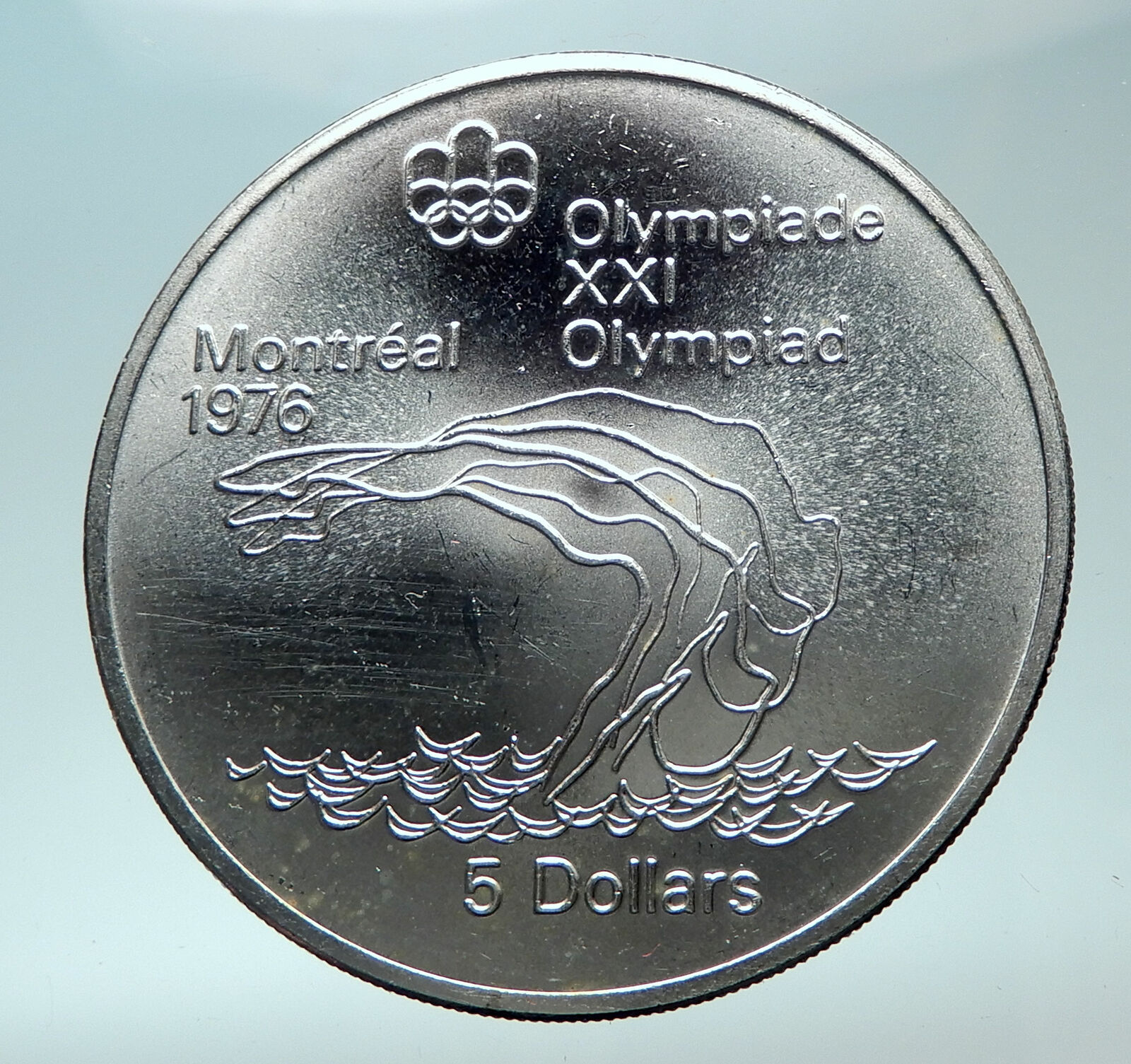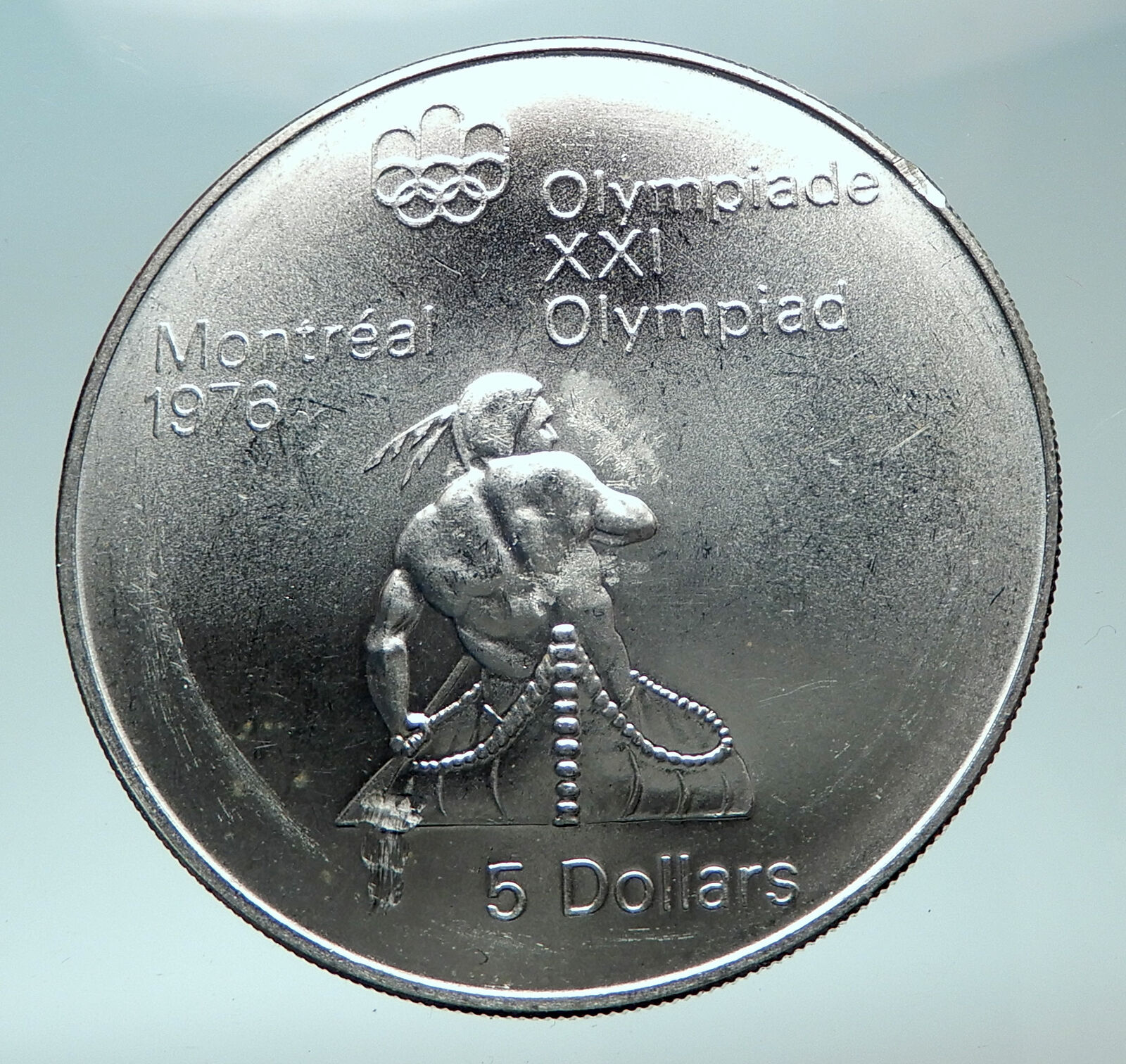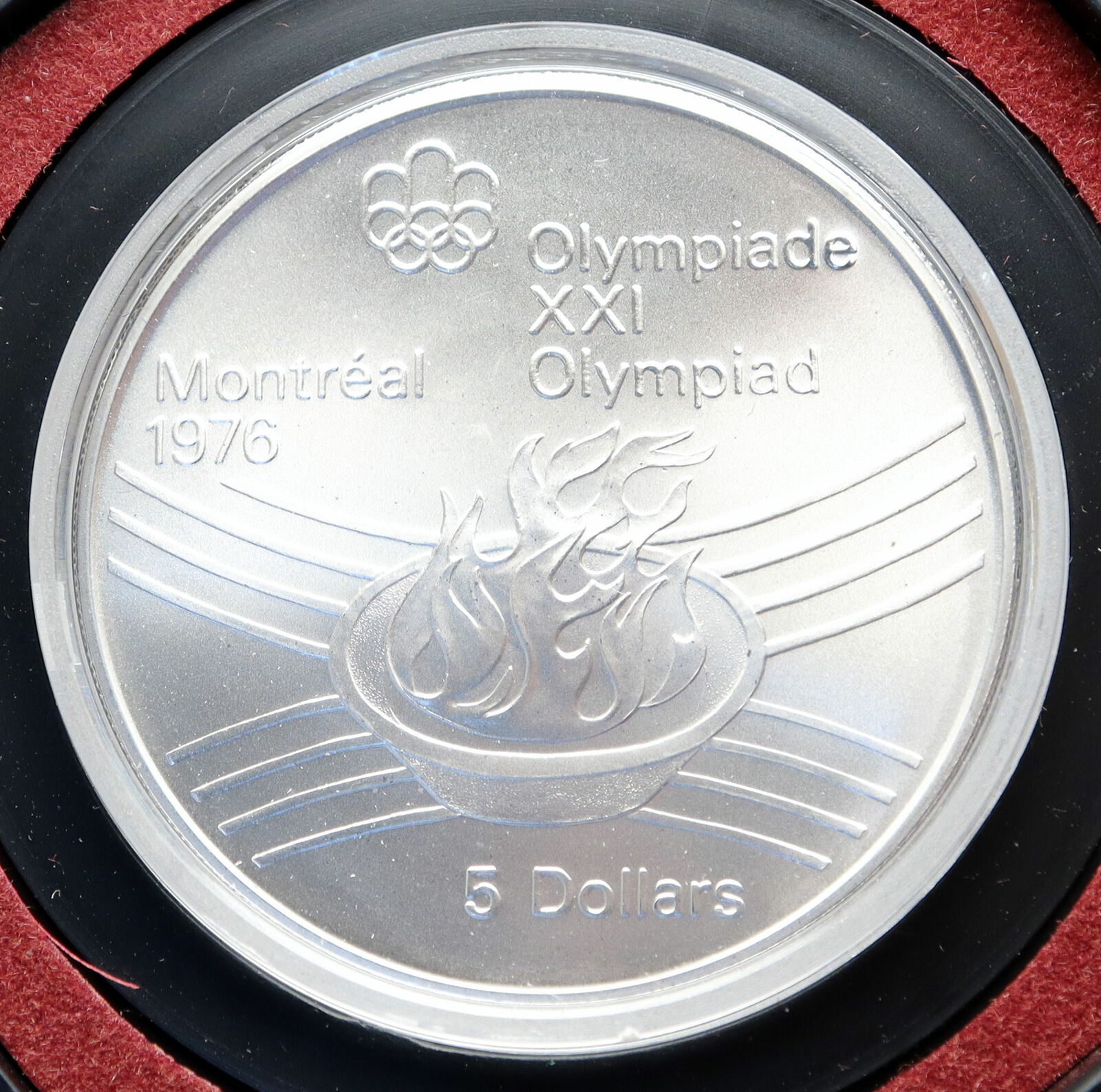|
Canada under Elizabeth II – Queen: 6 February 1952–present
100th Anniversary of the Royal Canadian Navy
2010 Deep Proof-Like Silver Dollar 36.07mm (25.17 grams) 0.925 Silver (0.7485 oz. ASW)
Reference: KM# 995
Certification: NGC MS 69 DPL 2845076-009
ELIZABETH II D·G·REGINA, Elizabeth facing right.
·-· · ·- -·· -·– ·- -·– · ·-· · ·- -·· -·– CANADA DOLLAR 1910 2010 YB ·–· ·-· · – — ··- ·· ·–· ·-· · -, HMCS Sackville surrounded by ship’s motto (Ready Aye Ready/Prêt Oui Prêt) in Morse code.
You are bidding on the exact item pictured, provided with a Certificate of Authenticity and Lifetime Guarantee of Authenticity.
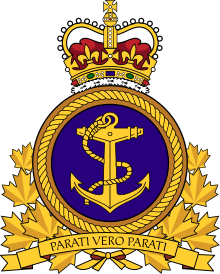 The Royal Canadian Navy (RCN; French: Marine royale canadienne) is the naval force of Canada. The RCN is one of three environmental commands within the Canadian Armed Forces. As of 2017, the Royal Canadian Navy operates 12 frigates, 4 attack submarines, 12 coastal defence vessels and 8 patrol/training vessels, as well as several auxiliary vessels. The Royal Canadian Navy consists of 8,500 Regular Force and 5,100 Primary Reserve sailors, supported by 5,300 civilians. Vice-Admiral Art McDonald is the current Commander of the Royal Canadian Navy and Chief of the Naval Staff. The Royal Canadian Navy (RCN; French: Marine royale canadienne) is the naval force of Canada. The RCN is one of three environmental commands within the Canadian Armed Forces. As of 2017, the Royal Canadian Navy operates 12 frigates, 4 attack submarines, 12 coastal defence vessels and 8 patrol/training vessels, as well as several auxiliary vessels. The Royal Canadian Navy consists of 8,500 Regular Force and 5,100 Primary Reserve sailors, supported by 5,300 civilians. Vice-Admiral Art McDonald is the current Commander of the Royal Canadian Navy and Chief of the Naval Staff.
Founded in 1910 as the Naval Service of Canada and given royal sanction on 29 August 1911, the Royal Canadian Navy was amalgamated with the Royal Canadian Air Force and the Canadian Army to form the unified Canadian Armed Forces in 1968, after which it was known as Maritime Command until 2011.
In 2011, its historical title of “Royal Canadian Navy” was restored. Over the course of its history, the RCN has served in the First and Second World Wars, the Korean War, the Persian Gulf War, the War in Afghanistan and numerous United Nations peacekeeping missions and NATO operations.
Established following the introduction of the Naval Service Act by then Prime Minister Sir Wilfrid Laurier, the Naval Service of Canada (NSC) was intended as a distinct naval force for Canada, that, should the need arise, could be placed under British control. The bill received royal assent on 4 May 1910. Initially equipped with two former Royal Navy vessels, HMCS Niobe and HMCS Rainbow, King George V granted permission for the service to be known as the Royal Canadian Navy on 29 August 1911.
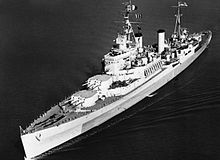 During the first years of the First World War, the RCN’s six-vessel naval force patrolled both the North American west and east coasts to deter the German naval threat, with a seventh ship, HMCS Shearwater joining the force in 1915. Just before the end of the war in 1918, the Royal Canadian Naval Air Service was established with the purpose of carrying out anti-submarine operations; however, it was disbanded after the armistice of 11 November. During the first years of the First World War, the RCN’s six-vessel naval force patrolled both the North American west and east coasts to deter the German naval threat, with a seventh ship, HMCS Shearwater joining the force in 1915. Just before the end of the war in 1918, the Royal Canadian Naval Air Service was established with the purpose of carrying out anti-submarine operations; however, it was disbanded after the armistice of 11 November.
After the war, the Royal Canadian Navy took over certain responsibilities of the Department of Transport’s Marine Service, and slowly started to build its fleet, with the first warships specifically designed for the RCN being commissioned in 1932. At the outbreak of the Second World War, the Navy had 11 combat vessels, 145 officers and 1,674 men. During the Second World War, the Royal Canadian Navy expanded significantly, ultimately gaining responsibility for the entire Northwest Atlantic theatre of war. During the Battle of the Atlantic, the RCN sank 31 U-boats and sank or captured 42 enemy surface vessels, while successfully completing 25,343 merchant crossings. The Navy lost 24 ships and 1,797 sailors in the war.
,_in_the_late_1950s.jpg/220px-McDonnell_F2H-3_Banshees_in_flight_over_HMCS_Bonaventure_(CVL_22),_in_the_late_1950s.jpg) From 1950 to 1955, during the Korean War, Canadian destroyers maintained a presence off the Korean peninsula, engaging in shore bombardments and maritime interdiction. During the Cold War, the Navy developed an anti-submarine capability to counter the growing Soviet naval threat. In the 1960s, the Royal Canadian Navy retired most of its Second World War vessels, and further developed its anti-submarine warfare capabilities by acquiring the Sikorsky CH-124 Sea King, and successfully pioneered the use of large maritime helicopters on small surface vessels. At that time, Canada was also operating an aircraft carrier, HMCS Bonaventure, flying the McDonnell F2H Banshee fighter jet until 1962, as well as various other anti-submarine aircraft. From 1950 to 1955, during the Korean War, Canadian destroyers maintained a presence off the Korean peninsula, engaging in shore bombardments and maritime interdiction. During the Cold War, the Navy developed an anti-submarine capability to counter the growing Soviet naval threat. In the 1960s, the Royal Canadian Navy retired most of its Second World War vessels, and further developed its anti-submarine warfare capabilities by acquiring the Sikorsky CH-124 Sea King, and successfully pioneered the use of large maritime helicopters on small surface vessels. At that time, Canada was also operating an aircraft carrier, HMCS Bonaventure, flying the McDonnell F2H Banshee fighter jet until 1962, as well as various other anti-submarine aircraft.
.svg/220px-Canada_(orthographic_projection).svg.png)  Canada is a country, consisting of ten provinces and three territories, in the northern part of the continent of North America. It extends from the Atlantic to the Pacific and northward into the Arctic Ocean, covering 9.98 million square kilometres (3.85 million square miles) in total, making it the world’s second-largest country by total area and the fourth-largest country by land area. Canada’s common border with the United States forms the world’s longest land border. Canada is sparsely populated overall, the majority of its land territory being dominated by forest and tundra as well as the mountain range of the Rocky Mountains; about four-fifths of the population live near to the southern border. The majority of Canada has a cold or severely cold winter climate, but southerly areas are warm in summer. Canada is a country, consisting of ten provinces and three territories, in the northern part of the continent of North America. It extends from the Atlantic to the Pacific and northward into the Arctic Ocean, covering 9.98 million square kilometres (3.85 million square miles) in total, making it the world’s second-largest country by total area and the fourth-largest country by land area. Canada’s common border with the United States forms the world’s longest land border. Canada is sparsely populated overall, the majority of its land territory being dominated by forest and tundra as well as the mountain range of the Rocky Mountains; about four-fifths of the population live near to the southern border. The majority of Canada has a cold or severely cold winter climate, but southerly areas are warm in summer.
The land now called Canada has been inhabited for millennia by various Aboriginal peoples. Beginning in the late 15th century, British and French colonies were established on the region’s Atlantic coast. As a consequence of various conflicts, the United Kingdom gained and lost North American territories until left, in the late 18th century, with what mostly comprises Canada today. Pursuant to the British North America Act, on July 1, 1867, three colonies joined to form the autonomous federal Dominion of Canada. This began an accretion of provinces and territories to the new self-governing Dominion. In 1931, Britain granted Canada near total independence with the Statute of Westminster 1931 and full sovereignty was attained when the Canada Act 1982 severed the vestiges of legal dependence on the British parliament.
Canada is a federal parliamentary democracy and a constitutional monarchy, Queen Elizabeth II being the current head of state. The country is officially bilingual at the federal level. It is one of the world’s most ethnically diverse and multicultural nations, the product of large-scale immigration from many countries, with a population of approximately 35 million as of 2015. Its advanced economy is the eleventh largest in the world, relying chiefly upon its abundant natural resources and well-developed international trade networks. Canada’s long and complex relationship with the United States has had a significant impact on its economy and culture.
Canada is a developed country and one of the wealthiest in the world, with the tenth highest nominal per capita income globally, and the eighth highest ranking in the Human Development Index. It ranks among the highest in international measurements of government transparency, civil liberties, quality of life, economic freedom, and education. Canada is a Commonwealth Realm member of the Commonwealth of Nations, a member of the Francophonie, and part of several major international and intergovernmental institutions or groupings including the North Atlantic Treaty Organization, the G8, the Group of Ten, the G20, the North American Free Trade Agreement and the Asia-Pacific Economic Cooperation forum.
|









 The Royal Canadian Navy (RCN; French: Marine royale canadienne) is the naval force of Canada. The RCN is one of three environmental commands within the Canadian Armed Forces. As of 2017, the Royal Canadian Navy operates 12 frigates, 4 attack submarines, 12 coastal defence vessels and 8 patrol/training vessels, as well as several auxiliary vessels. The Royal Canadian Navy consists of 8,500 Regular Force and 5,100 Primary Reserve sailors, supported by 5,300 civilians. Vice-Admiral Art McDonald is the current Commander of the Royal Canadian Navy and Chief of the Naval Staff.
The Royal Canadian Navy (RCN; French: Marine royale canadienne) is the naval force of Canada. The RCN is one of three environmental commands within the Canadian Armed Forces. As of 2017, the Royal Canadian Navy operates 12 frigates, 4 attack submarines, 12 coastal defence vessels and 8 patrol/training vessels, as well as several auxiliary vessels. The Royal Canadian Navy consists of 8,500 Regular Force and 5,100 Primary Reserve sailors, supported by 5,300 civilians. Vice-Admiral Art McDonald is the current Commander of the Royal Canadian Navy and Chief of the Naval Staff.  During the first years of the First World War, the RCN’s six-vessel naval force patrolled both the North American west and east coasts to deter the German naval threat, with a seventh ship, HMCS Shearwater joining the force in 1915. Just before the end of the war in 1918, the Royal Canadian Naval Air Service was established with the purpose of carrying out anti-submarine operations; however, it was disbanded after the armistice of 11 November.
During the first years of the First World War, the RCN’s six-vessel naval force patrolled both the North American west and east coasts to deter the German naval threat, with a seventh ship, HMCS Shearwater joining the force in 1915. Just before the end of the war in 1918, the Royal Canadian Naval Air Service was established with the purpose of carrying out anti-submarine operations; however, it was disbanded after the armistice of 11 November. ,_in_the_late_1950s.jpg/220px-McDonnell_F2H-3_Banshees_in_flight_over_HMCS_Bonaventure_(CVL_22),_in_the_late_1950s.jpg) From 1950 to 1955, during the Korean War, Canadian destroyers maintained a presence off the Korean peninsula, engaging in shore bombardments and maritime interdiction. During the Cold War, the Navy developed an anti-submarine capability to counter the growing Soviet naval threat. In the 1960s, the Royal Canadian Navy retired most of its Second World War vessels, and further developed its anti-submarine warfare capabilities by acquiring the Sikorsky CH-124 Sea King, and successfully pioneered the use of large maritime helicopters on small surface vessels. At that time, Canada was also operating an aircraft carrier, HMCS Bonaventure, flying the McDonnell F2H Banshee fighter jet until 1962, as well as various other anti-submarine aircraft.
From 1950 to 1955, during the Korean War, Canadian destroyers maintained a presence off the Korean peninsula, engaging in shore bombardments and maritime interdiction. During the Cold War, the Navy developed an anti-submarine capability to counter the growing Soviet naval threat. In the 1960s, the Royal Canadian Navy retired most of its Second World War vessels, and further developed its anti-submarine warfare capabilities by acquiring the Sikorsky CH-124 Sea King, and successfully pioneered the use of large maritime helicopters on small surface vessels. At that time, Canada was also operating an aircraft carrier, HMCS Bonaventure, flying the McDonnell F2H Banshee fighter jet until 1962, as well as various other anti-submarine aircraft. .svg/220px-Canada_(orthographic_projection).svg.png)
 Canada is a country, consisting of ten provinces and three territories, in the northern part of the continent of North America. It extends from the Atlantic to the Pacific and northward into the Arctic Ocean, covering 9.98 million square kilometres (3.85 million square miles) in total, making it the world’s second-largest country by total area and the fourth-largest country by land area. Canada’s common border with the United States forms the world’s longest land border. Canada is sparsely populated overall, the majority of its land territory being dominated by forest and tundra as well as the mountain range of the Rocky Mountains; about four-fifths of the population live near to the southern border. The majority of Canada has a cold or severely cold winter climate, but southerly areas are warm in summer.
Canada is a country, consisting of ten provinces and three territories, in the northern part of the continent of North America. It extends from the Atlantic to the Pacific and northward into the Arctic Ocean, covering 9.98 million square kilometres (3.85 million square miles) in total, making it the world’s second-largest country by total area and the fourth-largest country by land area. Canada’s common border with the United States forms the world’s longest land border. Canada is sparsely populated overall, the majority of its land territory being dominated by forest and tundra as well as the mountain range of the Rocky Mountains; about four-fifths of the population live near to the southern border. The majority of Canada has a cold or severely cold winter climate, but southerly areas are warm in summer.

